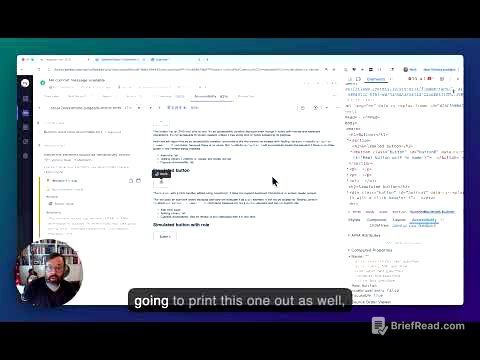TLDR;
The video discusses Meta's advancements in computer interface technology, specifically a wristband that allows users to control devices through neuromuscular signals. It highlights the potential of this technology to replace traditional input methods like touchscreens and cameras, offering a more intuitive and accessible user experience. The video also touches on Zuckerberg's leadership in fostering innovation and Meta's strategic vision for the future of computing beyond smartphones.
- Meta's wristband technology uses neuromuscular signals for device control.
- Zuckerberg's leadership and vision are key to Meta's innovation.
- The technology aims to overcome limitations of current interfaces like touchscreens and camera-based gestures.
인트로 [0:00]
The video begins by highlighting a leak revealing that 50% of Meta's superintelligence lab members are Chinese, with a minimum annual salary of 14 billion won. It introduces Meta's acquisition of CTR Labs in 2019, a company founded by Thomas Reardon, who previously developed Internet Explorer at Microsoft and holds a PhD in neuroscience. CTR Labs specializes in technology that detects neuromuscular signals in real-time, enabling control of movement intention through computers or digital avatars. The video emphasizes that this acquisition, made before the widespread prevalence of AI, positions Meta to lead in the development of next-generation interfaces beyond smartphones.
배경 [1:08]
The video transitions to a demonstration of Meta's wristband technology, which recognizes handwriting in mid-air. It emphasizes the advanced nature of this technology compared to competitors. The video underscores Zuckerberg's leadership in attracting top talent and fostering innovation, contrasting it with executive-driven approaches. It suggests that Zuckerberg's vision extends beyond smartphones, with the acquisition of Oculus in 2014 as an early step in preparing for the future of computing.
연구 결과 [3:03]
The video discusses a paper presented by Meta on July 23, 2025, detailing technology that allows users to operate computers by wearing a wristband. The publication of this paper indicates that Meta's actual technological capabilities are even more advanced. The wristband detects electrical signals from muscle movements, allowing users to control computers without invasive chip implants. The demonstration shows precise cursor control through wrist movements, eliminating the need for traditional input devices.
자세한 원리 [5:00]
The video addresses the limitations of camera-based gesture recognition in devices like Apple Vision Pro, which require users to keep their hands visible. Meta's wristband captures mental signals sent from the brain to hand muscles, offering a solution to these limitations. The challenge lies in individual variability, as signal patterns differ due to anatomical structure, sensor position, and skin condition. Meta overcomes this by using data from over 6,527 participants to train a model with 60 million parameters, reducing the error rate to a commercially viable level. The technology enables precise control of various gestures, allowing users to play games without traditional controllers.
소름돋는 큰 그림 [7:47]
The video explains that the wristband is designed for use with AR glasses, such as Meta's Orion, enabling intuitive control in various situations. It addresses the awkwardness of voice commands in public and highlights the convenience of using the wristband for discreet control. Meta is likely to offer customization options for improved accuracy, potentially through a subscription model. The video draws a parallel to Apple's ecosystem lock-in, suggesting that Meta aims to create a similar ecosystem centered around bio-signals and user data.
저커버그의 의도 [9:14]
The video explores the fundamental question of why we need to touch devices to operate them, referencing Musk's first-principles thinking. Both Musk and Zuckerberg envision devices that can be controlled without physical contact, but they aim to overcome the limitations and rejections associated with camera-based gestures and brain implants. Meta's research seeks to overcome these limitations through a horizontal method. The video concludes by emphasizing that Meta is positioning itself to lead the interface wars in the post-smartphone era, leveraging acquisitions like CTL Labs and the expertise of researchers like Thomas Reardon. The technology is expected to be a game-changer for the AR wearable ecosystem and a key input into the metaverse.









